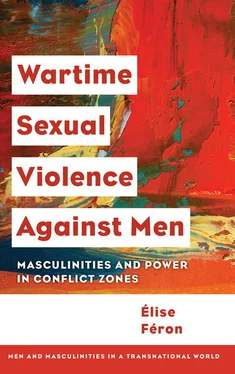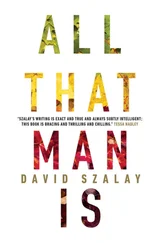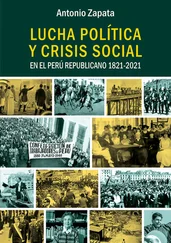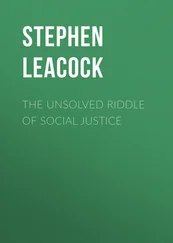In spite of these coding difficulties, some numbers have begun to emerge, signaling that the phenomenon is much more common and widespread than usually assumed. The attention of the wider public in Western countries has notably been drawn to the issue with the publication of some reports about sexual violence in armies, such as the figures published in 2012 by the US Department of Defense about the percentage of US male soldiers as victims of sexual assault: of an estimated twenty-six thousand soldiers who have been victims of sexual assault in 2012, 54% were men (Department of Defense 2012). Slowly, other figures collected in conflict zones are being published., for instance, a study conducted by Johnson et al. (2010) has reported that 23.6% of men and boys (39.7% of women and girls) living in Eastern DRC have experienced some form of conflict-related sexual violence. Such figures are in line with what has been observed in many other conflicts, and demonstrate in a striking manner that wartime sexual violence against men is, contrary to common assumptions, far from being an anecdotal phenomenon.
If researchers have only recently started to compile statistics, empirical evidence suggests that wartime sexual violence against men is probably as old as war itself. As explained by Sivakumaran (2010, 264), “the practice has been documented as dating back from almost time immemorial”. In Ancient Greece, when enemy men and boys were captured, they were often used as sex slaves, or turned into “warriors’ brides” in Mesoamerica (Del Zotto and Jones 2002). In the ancient world, Chinese, Persian, Egyptian or Norse armies, to quote but a few examples, castrated their male enemies, and publicly displayed their penises (Goldstein 2004, 357). Castration could be partial (cutting off testicles) or total (cutting both testicles and penises), and sometimes enemy men were circumcised, as a form of symbolic castration. In many pre-Colombian societies, like the Aztec in Central America as well as among Native American peoples, raping male prisoners was used as a way to assert domination, when male enemy combatants were not castrated before being eventually killed. In all these cases, sexual violence constituted a performative act underscoring the henceforth dominated and feminized status of male defeated enemies. Castration in particular was clearly meant to take away the enemy combatants’ manhood, and, therefore, their symbolic and physical power. According to Zawati (2007, 33), in ancient wars and societies, wartime sexual violence against men, and specifically male rape was considered as a legitimate right of the victorious soldiers to declare the totality of the enemy’s defeat, and to show that the emasculated and vanquished enemy could not be a warrior or a ruler anymore. If, as Del Zotto and Jones (2002) explain, these acts have been performed less and less publicly, it does not mean that they are not practiced anymore: “As western Judeo-Christian and Islamic taboos against homo-eroticism (including violent homoeroticism) became institutionalized, the above-mentioned acts became less public, and generally ceased to be part of triumphal spectacles of violence. They continued to be practiced nonetheless, but ‘underground’”. One should, however, be careful not to stretch interpretations of today’s wartime sexual violence to existing evidence across ancient cultures and geographical areas. The fact that, in some ancient cultures like Ancient Greece, male-to-male sexual contact was not taboo suggests that it would be simplistic to read issues of gender relations and gender-based and sexual violence through the lenses of contemporary patriarchal and heteronormative societies. In that sense, the “undergrounding” of wartime sexual violence against men suggested by Del Zotto and Jones might have given these practices a whole new meaning, precisely by rendering them more taboo, inadmissible and, as we will see, feminizing. The plethora of historical examples nevertheless demonstrates that sexual violence against men has long been part of war and domination strategies.
Wars and genocides of the twenthieth century also abound with examples of sexual violence against men. During the Armenian genocide, for instance, sexual torture of men was quite prevalent. Many Armenian men were castrated, forced to march naked or circumcised after they had forcibly been converted to Islam (Bjørnlund 2011). Another famous case is the “Rape of Nanking” in 1937, during which Chinese men were raped and forced to rape each other in front of Japanese soldiers. Horror did not stop there: “Cases were reported of castration, and even of selling penises for Japanese men to eat (supposedly to increase their potency)” (Goldstein 2004, 367). Cases of castration and rape of men have also been reported during the genocide in Cambodia (Studzinsky 2012, 92 and 106), among numerous other cases.
Recent conflicts offer ever more compelling evidence, and as attention is growing, cases of wartime sexual violence against men have now been documented almost all around the world. It has been used—though not always systematically—by soldiers, police officers, members of intelligence services, as well as by members of armed groups in civil wars, ethnic conflicts, interstate conflicts, genocides and so on. It is impossible to offer here a complete description of all known cases, but a few examples seem to stand out. In Bosnia-Herzegovina, for instance, a study of six thousand concentration-camp inmates in Sarajevo found that 80% of men reported having been raped (Stemple 2009, 613). Numerous cases of castration, mutilation of sexual organs, sexual humiliation, forced fellatio and prisoners forced to rape other (male and female) prisoners have been documented in official documents too (Bassiouni 1994). Survivors’ stories have also been compiled and disseminated by non-governmental organizations, such as in the 2014 documentary Silent Scream (Nečujni Krik) on wartime rape during the war in Bosnia-Herzegovina, and which includes testimonies of male survivors. More generally, sexual violence against men seems to have been used extensively during conflicts related to the breakup of Yugoslavia, for instance, by Serb forces in Kosovo (Munn 2008, 153) or in Croatia (Oosterhoff et al. 2004).
The various conflicts raging in Eastern DRC since the beginning of the 1990s provide compelling evidence too. In addition to the statistics quoted earlier, a survey by John Hopkins University, in cooperation with the Refugee Law Project in Uganda, surveyed 447 male refugees (99% from Congo) and found that 38.5% had experienced sexual violence at some point of their life (Dolan 2014a). Some databases suggest that, in 2013, there were around one hundred thousand male survivors of wartime sexual violence in the DRC (Refugee Law Project 2013b, 13). In Liberia, Johnson et al. (2008) reported that approximately one-third of adult male ex-combatants in their sample had experienced sexual violence, a percentage confirmed by other studies. [3] See, for instance, https://www.newscientist.com/article/dn14522-sexual-abuse-of-male-soldiers-common-in-liberian-war/ . Accessed 2 May 2018.
Numerous cases have also been reported in Sierra Leone, especially among male child soldiers (Betancourt et al. 2011), in Colombia where 15% of victims of conflict-related sexual violence are male (Quijano and Kelly 2012, 490) and in Uganda where the rape of men has been referred to as “the pain of kneeling” (Oloya 2013, 49). Other known and documented cases relate, among many others, to the conflicts in Chile (Oosterhoff et al. 2004, 68), El Salvador (Leiby 2012), Guatemala (Perlin 2000, 409), Argentina (Skjelsbæk 2001b, 74), the former Soviet Union (Scarce 1997, 31), Ukraine (UNHCR 2017b), Greece (Lunde et al. 1980), Northern Ireland (McGuffin 1974; Murray and Faul 2016), Israel/Palestine (Punamaki 1988; Weishut 2015), Algeria (Peel 2004), Iran (Agger 1989, 305), Kuwait (Scarce 1997, 31), Afghanistan and Syria (Human Rights Watch 2012; UN 2015) where sexual violence has been identified as one of the main reasons for migration (UNHCR 2017a), Kashmir (Sengupta 2011), but also Sri Lanka (Peel et al. 2000; Sooka 2014; All Survivors Project 2017), Kenya (Sivakumaran 2010, 265), Sudan and South Sudan (UN 2015), Central African Republic (Sivakumaran 2010, 263; UN 2015), Burundi (Féron 2015) and Rwanda (de Brouwer et al. 2005; Mullins 2009).
Читать дальше












